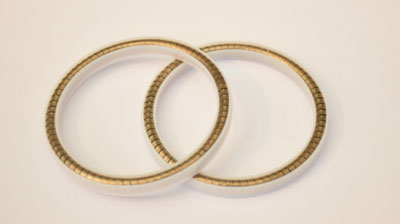
Choosing seals for a cryogenic valve
Choosing the right seal for cryogenic valves is critical to ensure reliable performance in extremely low-temperature environments. Here's a detailed guide to help you make an informed decision:

Key Factors to Consider:
1: Operating Temperature Range
Cryogenic valves typically operate at temperatures as low as -196°C (-320°F) for liquid nitrogen or even lower for liquid helium. Ensure the seal material maintains its integrity and flexibility at these temperatures.
2: Chemical Compatibility
The seal material must resist degradation from the media, such as liquefied natural gas (LNG), oxygen, nitrogen, helium, or hydrogen.
3: Seal Type
Choose between dynamic (for moving parts) and static seals based on the application. Dynamic seals require higher flexibility and wear resistance.
4: Pressure Ratings
Seals must handle the operating pressures while maintaining a tight seal.
5: Regulatory and Safety Standards
Ensure the seals meet relevant standards such as ISO, ASME, or specific certifications for oxygen service.
6: Seal location
Different locations will use different seal designs.
Recommended Materials:
1: PTFE (Polytetrafluoroethylene)
Advantages: Excellent chemical resistance, low friction, and stability at cryogenic temperatures.
Limitations: Low elasticity, requiring backup rings or specific designs to maintain tightness
JST has rich experience in designing cryogenic valve seals.
BV witnessed the whole test process.

New Blog
© Copyright: 2025 Guangzhou JST Seals Technology Co., Ltd. All Rights Reserved.
Scan to wechat
